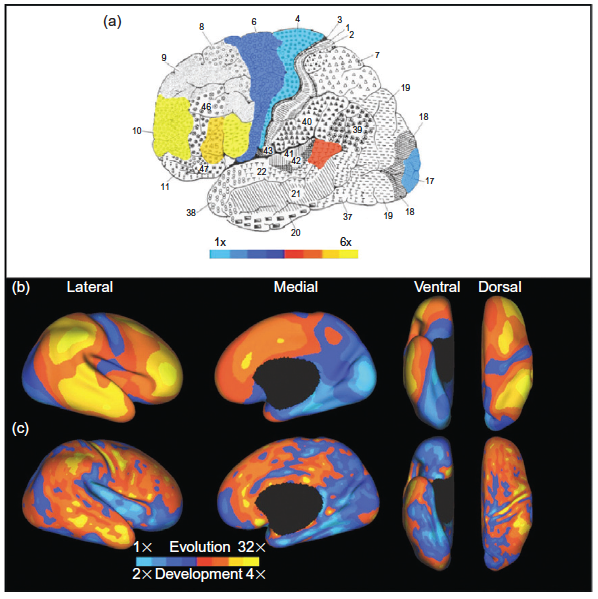Neocortex vs. isocortex
Chapter 4 endnote 61, from How Emotions are Made: The Secret Life of the Brain by Lisa Feldman Barrett.
Some context is:
This origin myth is so strongly held that scientists even created a model of the brain based on it. The model begins with ancient subcortical circuits for basic survival, which we allegedly inherited from reptiles. Sitting atop those circuits is an alleged emotion system, known as the “limbic system,” that we supposedly inherited from early mammals. And wrapped around the so-called limbic system, like icing on an already-baked cake, is our allegedly rational and uniquely human cortex. [...] The “neocortex” is not really new to the mammalian brain.

Regions that were mistakenly thought to be new parts of prefrontal cortex (Brodmann areas 44, 45, 46, and 47) were originally called “neocortex.”[2] Scientists now realize that most of “neocortex” is not new to the mammalian brain—these regions have just expanded in size over the course of evolution, so the proper name is “isocortex.” Similar regions have now been found in the macaque brain.[3] Nevertheless, the term “neocortex” has stuck, giving the false impression that prefrontal cortex is unique to humans.
Every animal with a cortex has limbic circuitry, but interestingly, barely anyone has studied how limbic circuitry differs from species to species. Scientists have assumed that because limbic circuitry is ancient, it hasn’t changed in size or structure across the expanse of time with natural selection. But there is a simple way to show that limbic tissue has been changed by the workings of evolution. The accompanying figure [4] displays a human brain, colored to show which parts have expanded when compared to a chimpanzee brain (top) and a macaque brain (bottom). The sensory networks—visual, auditory, somatosensory—have remained more or less the same, but association and limbic tissue have expanded.[5][4]
A human brain is three times as large as a chimpanzee brain, but it is not a puffed up human “neocortex” sitting on a chimp-sized “limbic system.” A human brain has chimp-sized sensory and motor networks connected to expanded interoceptive and control networks, each of which contains some limbic tissue.
Jared Diamond called humans the “third chimpanzee,” along with the common chimpanzee and the bonobo.[6] And he may be correct. But compared to a chimpanzee brain, our human brain is souped up: re-wired for making meaning out of sensations from the world in a way that is intimately linked, and even driven, by the needs of the body. Our conceptual tools for “making meaning” derive from, and are embedded in, the way that we communicate with each other for cooperative goals.
Notes on the Notes
- ↑ 1.0 1.1 Hill, Jason, Terrie Inder, Jeffrey Neil, Donna Dierker, John Harwell, and David Van Essen. 2010. "Similar patterns of cortical expansion during human development and evolution." Proceedings of the National Academy of Sciences 107 (29): 13135-13140.
- ↑ Brodmann, Korbinian. 1909. Vergleichende Lokalisationslehre der Grosshirnrinde in ihren Prinzipien dargestellt auf Grund des Zellenbaues. Barth.
- ↑ E.g., Petrides, Michael, Francesco Tomaiuolo, Edward H. Yeterian, and Deepak N. Pandya. 2012. "The prefrontal cortex: comparative architectonic organization in the human and the macaque monkey brains." Cortex 48 (1): 46-57.
- ↑ 4.0 4.1 Sherwood, Chet C., Amy L. Bauernfeind, Serena Bianchi, Mary Ann Raghanti, and Patrick R. Hof. 2012. "Human brain evolution writ large and small." In Progress in Brain Research, Volume 195: Evolution of the Primate Brain From Neuron to Behavior, edited by Michel A. Hofman and Dean Falk, 237-254. New York: Elsevier.
- ↑ Preuss, Todd M. 2011. "The human brain: rewired and running hot." Annals of the New York Academy of Sciences 1225 (S1): E182-E191. Table 3.
- ↑ Diamond, Jared. 1992. The Third Chimpanzee: The Evolution and Future of the Human Animal. New York: HarperCollins.